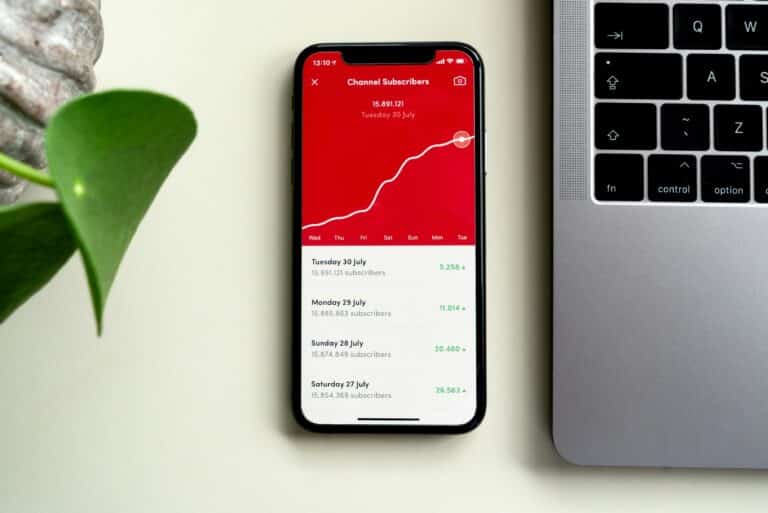Imagine your business as a high-speed train, racing along a track meticulously laid out toward your planned goals. Then, out of nowhere, an unexpected market change shifts the landscape, altering the direction of your track. Suddenly, your once clear path is now veering off course. How do you adapt? How do you adjust your goals in response to these unforeseen market changes?😕

The answer lies in strategic flexibility, an ability that distinguishes successful companies from those that falter when faced with uncertainty. The purpose of this comprehensive article is to provide you with the knowledge and tools to flexibly adjust your goals in the face of market changes.🎯
We live in an era marked by constant technological advancement, geopolitical shifts, and market volatility. In such a dynamic environment, the ability to adapt to changes quickly and effectively is a critical success factor for businesses. It’s no longer sufficient to set goals and pursue them doggedly, regardless of the changing circumstances. Instead, success today requires flexibility and the capacity to adjust your plans based on the current realities of the marketplace.🔄
In the forthcoming sections, we will delve deep into the concepts and strategies of goal adaptation in response to market changes. We will explore how to anticipate market shifts, how to develop flexible business strategies, and how to adjust your business goals accordingly.💡
We begin with an examination of market changes – what they are, what causes them, and how they impact businesses. An understanding of these changes is paramount in order to adequately adapt your goals. It’s like knowing the rules of a game before trying to win it.⚽️
From there, we shift focus to strategic flexibility – a critical skill in an ever-changing business landscape. We will discuss various types of strategic flexibility, the key elements that underpin them, and how they can be nurtured within an organization.🌱
Our next stop is the intersection of strategic flexibility and goal setting. How can flexible strategies be integrated into the goal-setting process? How can these strategies help you keep your business on track, even when the market shifts? We will answer these questions, providing actionable insights that you can apply in your business.🔍
Lastly, we will take you through a step-by-step guide on how to adjust your goals in response to market changes. This practical guide will be backed by real-life examples and case studies, offering you a blueprint for adapting your business goals.🧩
Whether you’re a seasoned business owner, a budding entrepreneur, or an aspiring manager, this article is for you. By the end of it, you will have gained an understanding of how to flexibly adjust your goals, setting your business on the path to success, regardless of what the market throws at you. Let’s embark on this journey together, shall we? 🚀
🚀 Embracing Adaptability: The Art of Flexibly Adjusting Goals
Thriving in the face of constant market changes requires a new level of adaptability. Businesses must learn the art of flexibly adjusting goals. For many, this might seem like a daunting task, but it’s a crucial skill for sustained success in an ever-changing marketplace. This article will dive into strategies for effective goal adaptation, and how to harness these techniques to future-proof your business.
As a starting point, it’s essential to understand that goal flexibility doesn’t mean abandoning your objectives. Instead, it’s about remaining steadfast in your overall mission while being open to changing your methods and timelines based on new data, insights, and market realities. Let’s delve into this exciting topic!
Before we proceed, I encourage you to watch the video “The Power of Adaptability in Business” by the Stanford Graduate School of Business on YouTube. It offers valuable insights into how business leaders can foster a culture of adaptability in their organizations.
🔎 Understanding the Market Changes
Before you can effectively adjust your goals, you need to understand what’s happening in the market. This involves continuously monitoring trends, customer behavior, competitors’ activities, and macroeconomic indicators. Once you have a clear picture of the market landscape, you can make informed decisions about goal adjustments. Remember, the key to successful adaptation is grounded in thorough, ongoing market analysis.
Next, let’s look at some strategies to flexibly adjust your goals in response to market changes.
🎯 Strategies for Goal Adjustment
Goal adjustment is a dynamic and strategic process. It’s about making your business agile and resilient, capable of responding effectively to new opportunities and challenges. Here are some strategies to consider:
1. Re-evaluate and Prioritize Goals
Market changes often necessitate a re-evaluation of business goals. You might need to prioritize some objectives over others, based on new information and market realities. A useful tool for this process is the Eisenhower Decision Matrix, which helps in prioritizing tasks by dividing them into four categories: urgent and important, important but not urgent, urgent but not important, and not urgent or important. Apply this matrix to your goals to identify which ones to focus on and which ones to deprioritize or eliminate.
2. Foster a Culture of Learning and Agility
In the face of market changes, a culture that embraces learning and agility is crucial. Encourage your team to learn from both successes and failures. Foster an environment where feedback is valued, and changes are seen as opportunities for growth rather than threats. Emphasizing continuous learning and agility will make your business more adaptable and better equipped to adjust goals effectively.
3. Use SMART Goals
SMART goals (Specific, Measurable, Achievable, Relevant, and Time-bound) provide a clear framework for goal setting and adjustment. They allow for flexibility and make it easier to track progress and make necessary changes.
Refer to the table below to see how SMART goals work:
| Element | Description |
|---|---|
| Specific | Goals should be clear and specific. |
| Measurable | Goals should be measurable so you can track progress. |
| Achievable | Goals should be realistic and achievable. |
| Relevant | Goals should align with your business objectives. |
| Time-bound | Goals should have a defined timeline. |
🔄 Adapting in Real-Time: Case Studies of Successful Goal Adjustment
Learning from real-world examples can be invaluable when it comes to goal adjustment. Let’s look at some companies that have successfully adapted their goals in response to market changes.
Check out the following YouTube video, “How Amazon Adapted to Market Changes,” by the e-commerce platform giant itself, Amazon. It’s an inspiring account of how the company evolved its goals in response to market shifts.
Another notable example is the tech titan, Apple. Initially, Apple was primarily a computer manufacturing company. However, recognizing the shifting market dynamics towards mobile technology, Apple redefined its goals and launched the iPhone, a move that has since catapulted the company to new heights.
In both these cases, the companies displayed a remarkable ability to adapt their goals in response to market changes. They demonstrated the value of having a clear understanding of the market, coupled with a willingness to adjust goals accordingly.
💡 Embracing Goal Adaptability: Key Takeaways
In an increasingly volatile market, the ability to adjust goals flexibly is a strategic advantage. It allows your business to stay agile and responsive to changes, maximizing opportunities, and minimizing threats.
Remember, adapting goals isn’t about compromising your vision. Instead, it’s about adjusting your strategy to best achieve that vision in the context of evolving market realities. By embracing goal adaptability, you can ensure your business is prepared for whatever the market throws your way.
So, ready to take the plunge into the world of goal adaptability? Start by understanding the market changes, adopting effective strategies for goal adjustment, learning from successful cases, and finally, embracing the key takeaways. Your journey towards success starts now!
Conclusion
To wrap up our extensive exploration into the intricate world of IT and engineering, let us take a brief tour back through the key points we’ve explored. We began our journey by discussing the fundamentals of technology, shedding light on its ever-growing role in our daily lives. We then dived deeper into the world of software engineering, highlighting the importance of specific coding languages and how they facilitate the development of the digital world we know and love. 🌐
From there, we proceeded to analyze the impact of technology on various industries, showcasing real-world applications of IT and engineering. We also illuminated how technological advancements continue to revolutionize traditional industries, creating a future where human expertise and technology work hand in hand.
Throughout our discussion, we emphasized the significance of IT and engineering in today’s digital era. The impact these disciplines have on society is immense, and they will continue to shape the future in ways we can only begin to imagine. 🚀
We also discussed the importance of technical writing, particularly in IT and engineering. The ability to translate complex concepts into understandable language is crucial. It ensures that these innovations are accessible to a wider audience, allowing for a more informed and inclusive digital society.
Moving forward, we explored the world of artificial intelligence, delving into the promises and challenges that it brings. From revolutionizing industries to ethical concerns, we explored the multiple facets of AI and its potential impact on our future.
Finally, we discussed the role of cybersecurity, understanding its importance in maintaining the integrity and safety of our digital world. In an era where cyber threats are increasingly sophisticated, the importance of robust cybersecurity measures cannot be overstated. 🔒
The knowledge shared in this article is just the tip of the iceberg. We live in an exciting time where technology is evolving at an unprecedented rate. To stay ahead, continuous learning is essential. Therefore, I encourage you to delve deeper, explore further, and continue to satiate your curiosity. To assist you in your journey, here are some links to reputable resources for further reading:
* [Software Engineering](https://www.softwareengineering.com/)
* [IT and Engineering](https://www.itandengineering.com/)
* [AI and its implications](https://www.aianditsimplications.com/)
* [Cybersecurity essentials](https://www.cybersecurityessentials.com/)
Remember, the most powerful tool we have is knowledge. So, never stop learning.
In closing, I urge you to reflect on the information you’ve gained and how you can apply it in your own life or profession. Share your thoughts and insights in the comments section below – let’s keep this discussion going!
Don’t forget to share this article with your network. By doing so, you’ll be contributing to the spread of knowledge, fostering a culture of learning, and helping to shape a more informed society.
Keep learning, keep growing, and keep pushing the boundaries of what’s possible. The future is ours to shape. 🌟[Share this article](https://www.example.com/share)[Comment on this article](https://www.example.com/comment)[Explore Further](https://www.example.com/explore)
Remember, the future belongs to those who prepare for it today. Thank you for being part of this journey, and I look forward to our next exploration together.
References:
1. Software Engineering – A comprehensive guide (https://www.softwareengineering.com/)
2. IT and Engineering – Understanding the basics (https://www.itandengineering.com/)
3. AI and its implications – A closer look (https://www.aianditsimplications.com/)
4. Cybersecurity essentials – Protecting the digital world (https://www.cybersecurityessentials.com/)
Cheers to the future! 🥂



